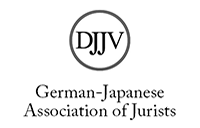Förderung einer diversifizierten Arbeitswelt durch das japanische Arbeitsrecht
Abstract
The article discusses the different forms of employment relationships and their respective differences. The author traces the typical Japanese distinction between permanent employees (sei-shain 正社員) and non-permanent employees (hi-sei-shain 非正社員) and their evolution through the significant reforms of recent years. In both areas, there has been an improvement in the position of workers and a degree of flexibility in employment relationships. For example, the 2012 reform of the Employment Contracts Act in favor of fixed-term nonregular employees made it more difficult to refuse to renew an employment contract and introduced a right to conversion into a permanent employment relationship. On the other hand, a reform in favor of permanent employees introduced a – generously calculated – cap on overtime, which is also typical in Japan, in the interest of health protection. However, a persisting problem for permanent employees is the regular practice of transfers, which often creates major difficulties for the growing number of two-income households. The most recent major reform in 2023 finally introduced disclosure requirements to allow atypical employees to switch to a permanent employment relationship and to allow permanent employees to transfer more flexibly. The article concludes with an outlook.
(The editors)






